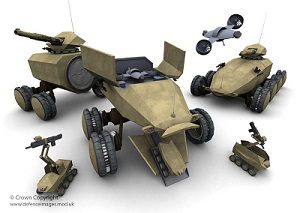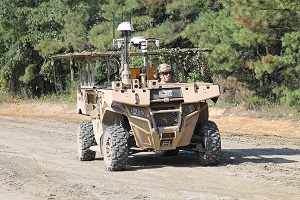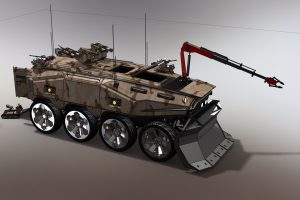[Editor’s Note: Mad Scientist Laboratory is pleased to publish the following post by guest blogger Dr. Jan Kallberg, faculty member, United States Military Academy at West Point, and Research Scientist with the Army Cyber Institute at West Point. His post serves as a cautionary tale regarding our finite intellectual resources and the associated existential threat in failing to protect them!]
Preface: Based on my experience in cybersecurity, migrating to a broader cyber field, there have always been those exceptional individuals that have an unreplicable ability to see the challenge early on, create a technical solution, and know how to play it in the right order for maximum impact. They are out there – the Einsteins, Oppenheimers, and Fermis of cyber. The arrival of Artificial Intelligence increases our reliance on these highly capable individuals – because someone must set the rules, the boundaries, and point out the trajectory for Artificial Intelligence at initiation.

As an industrialist society, we tend to see technology and the information that feeds it as the weapons – and ignore the few humans that have a large-scale direct impact. Even if identified as a weapon, how do you make a human mind classified? Can we protect these high-ability individuals that in the digital world are weapons, not as tools but compilers of capability, or are we still focused on the tools? Why do we see only weapons that are steel and electronics and not the weaponized mind as a weapon? I believe firmly that we underestimate the importance of Applicable Intelligence – the ability to play the cyber engagement in the optimal order. Adversaries are often good observers because they are scouting for our weak spots. I set the stage for the following post in 2034, close enough to be realistic and far enough for things to happen when our adversaries are betting that we rely more on a few minds than we are willing to accept.
 Post: In a not too distant future, 20th of August 2034, a peer adversary’s first strategic moves are the targeted killings of less than twenty individuals as they go about their daily lives: watching a 3-D printer making a protein sandwich at a breakfast restaurant; stepping out from the downtown Chicago monorail; or taking a taste of a poison-filled retro Jolt Cola. In the gray zone, when the geopolitical temperature increases, but we are still not at war yet, our adversary acts quickly and expedites a limited number of targeted killings within the United States of persons whom are unknown to mass media, the general public, and have only one thing in common – Applicable Intelligence (AI).
Post: In a not too distant future, 20th of August 2034, a peer adversary’s first strategic moves are the targeted killings of less than twenty individuals as they go about their daily lives: watching a 3-D printer making a protein sandwich at a breakfast restaurant; stepping out from the downtown Chicago monorail; or taking a taste of a poison-filled retro Jolt Cola. In the gray zone, when the geopolitical temperature increases, but we are still not at war yet, our adversary acts quickly and expedites a limited number of targeted killings within the United States of persons whom are unknown to mass media, the general public, and have only one thing in common – Applicable Intelligence (AI).
 The ability to apply is a far greater asset than the technology itself. Cyber and card games have one thing in common, the order you play your cards matters. In cyber, the tools are publicly available, anyone can download them from the Internet and use them, but the weaponization of the tools occurs when used by someone who understands how to play the tools in an optimal order. These minds are different because they see an opportunity to exploit in a digital fog of war where others don’t or can’t see it. They address problems unburdened by traditional thinking, in new innovative ways, maximizing the dual-purpose of digital tools, and can create tangible cyber effects.
The ability to apply is a far greater asset than the technology itself. Cyber and card games have one thing in common, the order you play your cards matters. In cyber, the tools are publicly available, anyone can download them from the Internet and use them, but the weaponization of the tools occurs when used by someone who understands how to play the tools in an optimal order. These minds are different because they see an opportunity to exploit in a digital fog of war where others don’t or can’t see it. They address problems unburdened by traditional thinking, in new innovative ways, maximizing the dual-purpose of digital tools, and can create tangible cyber effects.
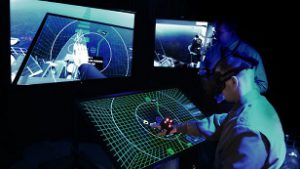 It is the Applicable Intelligence (AI) that creates the procedures, the application of tools, and turns simple digital software in sets or combinations as a convergence to digitally lethal weapons. This AI is the intelligence to mix, match, tweak, and arrange dual purpose software. In 2034, it is as if you had the supernatural ability to create a thermonuclear bomb from what you can find at Kroger or Albertson.
It is the Applicable Intelligence (AI) that creates the procedures, the application of tools, and turns simple digital software in sets or combinations as a convergence to digitally lethal weapons. This AI is the intelligence to mix, match, tweak, and arrange dual purpose software. In 2034, it is as if you had the supernatural ability to create a thermonuclear bomb from what you can find at Kroger or Albertson.
 Sadly we missed it; we didn’t see it. We never left the 20th century. Our adversary saw it clearly and at the dawn of conflict killed off the weaponized minds, without discretion, and with no concern for international law or morality.
Sadly we missed it; we didn’t see it. We never left the 20th century. Our adversary saw it clearly and at the dawn of conflict killed off the weaponized minds, without discretion, and with no concern for international law or morality.
These intellects are weapons of growing strategic magnitude. In 2034, the United States missed the importance of these few intellects. This error left them unprotected.
All of our efforts were instead focusing on what they delivered, the application and the technology, which was hidden in secret vaults and only discussed in sensitive compartmented information facilities. Therefore, we classify to the highest level to ensure the confidentiality and integrity of our cyber capabilities. Meanwhile, the most critical component, the militarized intellect, we put no value to because it is a human. In a society marinated in an engineering mindset, humans are like desk space, electricity, and broadband; it is a commodity that is input in the production of the technical machinery. The marveled technical machinery is the only thing we care about today, 2018, and as it turned out in 2034 as well.

We are stuck in how we think, and we are unable to see it coming, but our adversaries see it. At a systematic level, we are unable to see humans as the weapon itself, maybe because we like to see weapons as something tangible, painted black, tan, or green, that can be stored and brought to action when needed. As the armory of the war of 1812, as the stockpile of 1943, and as the launch pad of 2034. Arms are made of steel, or fancier metals, with electronics – we failed in 2034 to see weapons made of corn, steak, and an added combative intellect.
General Nakasone stated in 2017, “Our best ones [coders] are 50 or 100 times better than their peers,” and continued “Is there a sniper or is there a pilot or is there a submarine driver or anyone else in the military 50 times their peer? I would tell you, some coders we have are 50 times their peers.” In reality, the success of cyber and cyber operations is highly dependent not on the tools or toolsets but instead upon the super-empowered individual that General Nakasone calls “the 50-x coder.”

There were clear signals that we could have noticed before General Nakasone pointed it out clearly in 2017. The United States’ Manhattan Project during World War II had at its peak 125,000 workers on the payroll, but the intellects that drove the project to success and completion were few. The difference with the Manhattan Project and the future of cyber is that we were unable to see the human as a weapon, being locked in by our path dependency as an engineering society where we hail the technology and forget the importance of the humans behind it.

America’s endless love of technical innovations and advanced machinery reflects in a nation that has celebrated mechanical wonders and engineered solutions since its creation. For America, technical wonders are a sign of prosperity, ability, self-determination, and advancement, a story that started in the early days of the colonies, followed by the intercontinental railroad, the Panama Canal, the manufacturing era, the moon landing, and all the way to the autonomous systems, drones, and robots. In a default mindset, there is always a tool, an automated process, a software, or a set of technical steps that can solve a problem or act.
The same mindset sees humans merely as an input to technology, so humans are interchangeable and can be replaced. In 2034, the era of digital conflicts and the war between algorithms with engagements occurring at machine speed with no time for leadership or human interaction, it is the intellects that design and understand how to play it. We didn’t see it.
In 2034, with fewer than twenty bodies piled up after targeted killings, resides the Cyber Pearl Harbor. It was not imploding critical infrastructure, a tsunami of cyber attacks, nor hackers flooding our financial systems, but instead traditional lead and gunpowder. The super-empowered individuals are gone, and we are stuck in a digital war at speeds we don’t understand, unable to play it in the right order, and with limited intellectual torque to see through the fog of war provided by an exploding kaleidoscope of nodes and digital engagements.

If you enjoyed this post, read our Personalized Warfare post.
Dr. Jan Kallberg is currently an Assistant Professor of Political Science with the Department of Social Sciences, United States Military Academy at West Point, and a Research Scientist with the Army Cyber Institute at West Point. He was earlier a researcher with the Cyber Security Research and Education Institute, The University of Texas at Dallas, and is a part-time faculty member at George Washington University. Dr. Kallberg earned his Ph.D. and MA from the University of Texas at Dallas and earned a JD/LL.M. from Juridicum Law School, Stockholm University. Dr. Kallberg is a certified CISSP, ISACA CISM, and serves as the Managing Editor for the Cyber Defense Review. He has authored papers in the Strategic Studies Quarterly, Joint Forces Quarterly, IEEE IT Professional, IEEE Access, IEEE Security and Privacy, and IEEE Technology and Society.


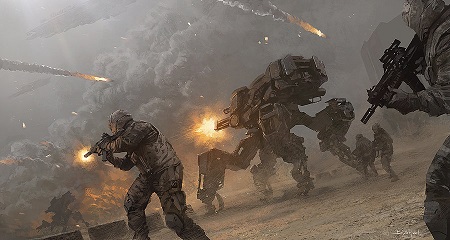

 Paulo crouched in his slit trench with his squad mates. He knew this was something other than an exercise. The entire Angolan 6th Mechanized Brigade had road marched south to Savate, about 60 kilometers from the Namibian border. There, they were ordered to dig fighting positions and issued live ammunition.
Paulo crouched in his slit trench with his squad mates. He knew this was something other than an exercise. The entire Angolan 6th Mechanized Brigade had road marched south to Savate, about 60 kilometers from the Namibian border. There, they were ordered to dig fighting positions and issued live ammunition.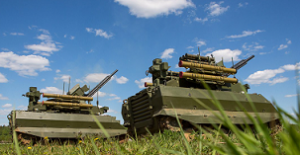
 Captain Verlin Ellis, Bravo Group, SANDF, crouched with his NCO, his soldiers, and his Namibian SF counterpart at dawn under a tree surrounded by thick green bush.
Captain Verlin Ellis, Bravo Group, SANDF, crouched with his NCO, his soldiers, and his Namibian SF counterpart at dawn under a tree surrounded by thick green bush.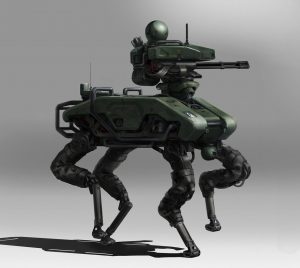
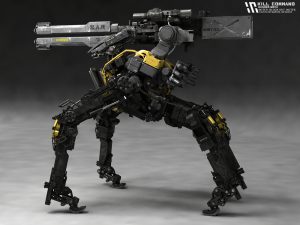
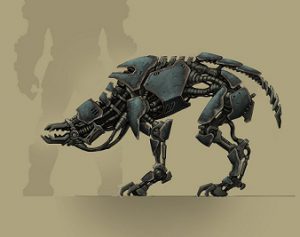
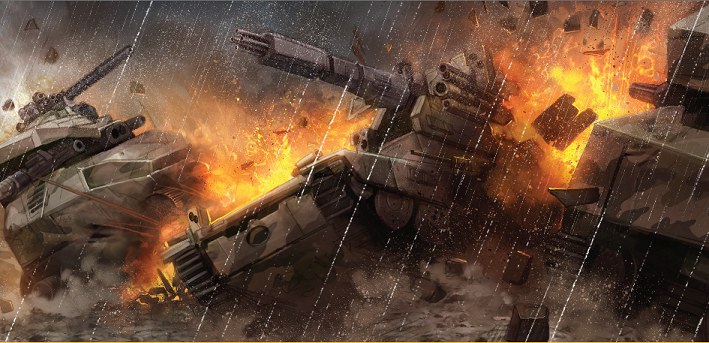


 Our foundational assumption about the Future Operational Environment is that the Character of Warfare is
Our foundational assumption about the Future Operational Environment is that the Character of Warfare is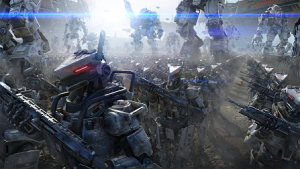
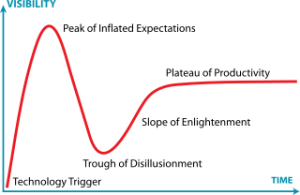
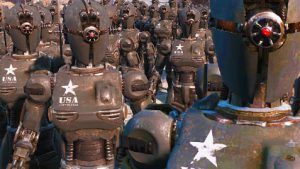
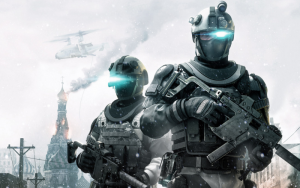 4. Coalition Warfare: A technology-enabled force will exasperate interoperability challenges with both our traditional and new allies. Our Army will not fight unilaterally on future battlefields. We have had difficulties with the interoperability of communications and have had gaps between capabilities that increased mission risks. These risks were offset by the skills our allies brought to the battlefield. We cannot build an Army that does not account for a coalition battlefield and our
4. Coalition Warfare: A technology-enabled force will exasperate interoperability challenges with both our traditional and new allies. Our Army will not fight unilaterally on future battlefields. We have had difficulties with the interoperability of communications and have had gaps between capabilities that increased mission risks. These risks were offset by the skills our allies brought to the battlefield. We cannot build an Army that does not account for a coalition battlefield and our 
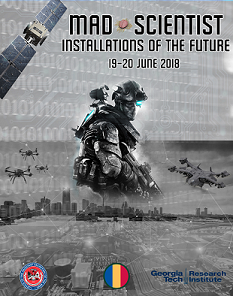 On 19-20 June 2018, the U.S. Army Training and Doctrine Command (TRADOC) Mad Scientist Initiative co-hosted the Installations of the Future Conference with the Office of the Assistant Secretary of the Army for Installations, Energy and Environment (OASA (IE&E)) and Georgia Tech Research Institute (GTRI). Emerging technologies supporting the hyper-connectivity revolution will enable improved training capabilities, security, readiness support (e.g., holistic medical facilities and brain gyms), and quality of life programs at Army installations. Our concepts and emerging doctrine for multi-domain operations recognizes this as increasingly important by including Army installations in the Strategic Support Area. Installations of the Future will serve as mission command platforms to project virtual power and expertise as well as Army formations directly to the battlefield.
On 19-20 June 2018, the U.S. Army Training and Doctrine Command (TRADOC) Mad Scientist Initiative co-hosted the Installations of the Future Conference with the Office of the Assistant Secretary of the Army for Installations, Energy and Environment (OASA (IE&E)) and Georgia Tech Research Institute (GTRI). Emerging technologies supporting the hyper-connectivity revolution will enable improved training capabilities, security, readiness support (e.g., holistic medical facilities and brain gyms), and quality of life programs at Army installations. Our concepts and emerging doctrine for multi-domain operations recognizes this as increasingly important by including Army installations in the Strategic Support Area. Installations of the Future will serve as mission command platforms to project virtual power and expertise as well as Army formations directly to the battlefield.
 2. Exclusion vs. Inclusion. The role of and access to future Army installations depends on the balance between these two extremes. The connections between local communities and Army installations will increase potential threat vectors, but resilience might depend on expanding inclusion. Additionally, access to specialized expertise in
2. Exclusion vs. Inclusion. The role of and access to future Army installations depends on the balance between these two extremes. The connections between local communities and Army installations will increase potential threat vectors, but resilience might depend on expanding inclusion. Additionally, access to specialized expertise in
 4. Army Modernization Challenge. Installations of the Future is a microcosm of overarching Army Modernization challenges. We are simultaneously invested in legacy infrastructure that we need to upgrade, and making decisions to build new smart facilities. Striking an effective and efficient balance will start with public-private partnerships to capture the expertise that exists in our universities and in industry. The expertise needed to succeed in this modernization effort does not exist in the Army. There are significant opportunities for Army Installations to participate in ongoing consortiums like the “Middle Georgia” Smart City Community and the Global Cities Challenge to pilot innovations in spaces such as energy resilience.
4. Army Modernization Challenge. Installations of the Future is a microcosm of overarching Army Modernization challenges. We are simultaneously invested in legacy infrastructure that we need to upgrade, and making decisions to build new smart facilities. Striking an effective and efficient balance will start with public-private partnerships to capture the expertise that exists in our universities and in industry. The expertise needed to succeed in this modernization effort does not exist in the Army. There are significant opportunities for Army Installations to participate in ongoing consortiums like the “Middle Georgia” Smart City Community and the Global Cities Challenge to pilot innovations in spaces such as energy resilience.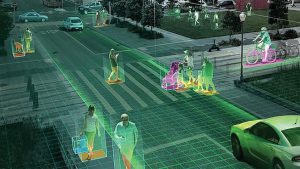 5. Technology is outpacing regulations and policy. The sensorization and available edge analytics in our public space offers improved security but might be perceived as decreasing personal privacy. While we give up some personal privacy when we live and work on Army installations, this collection of data will require active engagement with our communities. We studied an ongoing Unmanned Aerial System (UAS) support
5. Technology is outpacing regulations and policy. The sensorization and available edge analytics in our public space offers improved security but might be perceived as decreasing personal privacy. While we give up some personal privacy when we live and work on Army installations, this collection of data will require active engagement with our communities. We studied an ongoing Unmanned Aerial System (UAS) support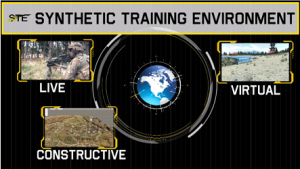 6. Synthetic Training Environment. The Installation of the Future offers the Army significant opportunities to divest itself of large brick and mortar training facilities and stove-piped, contractor support-intensive Training Aids, Devices, Simulations, and Simulators (TADSS). MG Maria Gervais, Deputy Commanding General, Combined Arms Center – Training (DCG, CAC-T), presented the Army’s
6. Synthetic Training Environment. The Installation of the Future offers the Army significant opportunities to divest itself of large brick and mortar training facilities and stove-piped, contractor support-intensive Training Aids, Devices, Simulations, and Simulators (TADSS). MG Maria Gervais, Deputy Commanding General, Combined Arms Center – Training (DCG, CAC-T), presented the Army’s
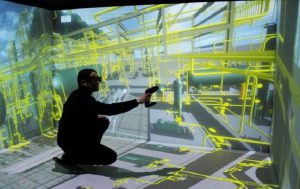
 9. Standard Approach to Smart Installations. A common suite of tools is needed to integrate smart technologies onto installations. While Garrison Commanders need mission command to take advantage of the specific cultures of their installations and surrounding communities, the Army cannot afford to have installations going in different directions on modernization efforts. A method is needed to rapidly pilot prototypes and then determine whether and how to scale the technologies across Army installations.
9. Standard Approach to Smart Installations. A common suite of tools is needed to integrate smart technologies onto installations. While Garrison Commanders need mission command to take advantage of the specific cultures of their installations and surrounding communities, the Army cannot afford to have installations going in different directions on modernization efforts. A method is needed to rapidly pilot prototypes and then determine whether and how to scale the technologies across Army installations.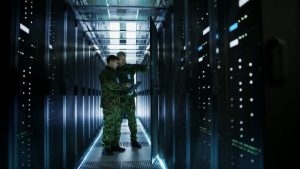 10. “Low Hanging Fruit.” There are opportunities for Army Installations to lead their communities in tech integration. Partnerships in energy savings, waste management, and early 5G infrastructure provide the Army with early adopter opportunities for collaboration with local communities, states, and across the nation. We must educate contracting officers and Government consumers to look for and seize upon these opportunities.
10. “Low Hanging Fruit.” There are opportunities for Army Installations to lead their communities in tech integration. Partnerships in energy savings, waste management, and early 5G infrastructure provide the Army with early adopter opportunities for collaboration with local communities, states, and across the nation. We must educate contracting officers and Government consumers to look for and seize upon these opportunities.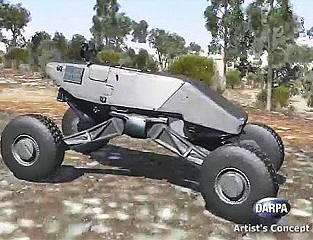
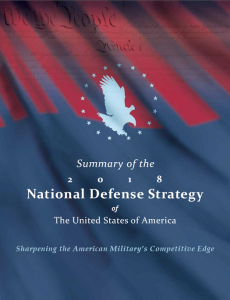
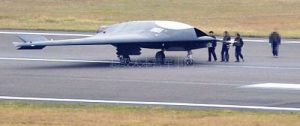
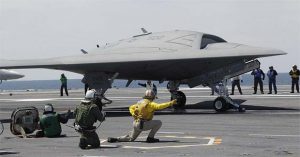
 Consider the example mission objective of an airfield seizure. Traditional thinking and methods would identify an immediate needed capability for two identical air droppable vehicles, therefore starting with a highly constrained platform engineering solution. Mission Engineering would instead start by asking: what is the best way to seize an airfield? What mix of capabilities are required to do so? What mix of vehicles (e.g., Soldiers, exoskeletons, robots, etc.) might you need within space and weight constraints of the delivery aircraft? What should the individual performance requirements be for each piece of equipment?
Consider the example mission objective of an airfield seizure. Traditional thinking and methods would identify an immediate needed capability for two identical air droppable vehicles, therefore starting with a highly constrained platform engineering solution. Mission Engineering would instead start by asking: what is the best way to seize an airfield? What mix of capabilities are required to do so? What mix of vehicles (e.g., Soldiers, exoskeletons, robots, etc.) might you need within space and weight constraints of the delivery aircraft? What should the individual performance requirements be for each piece of equipment?